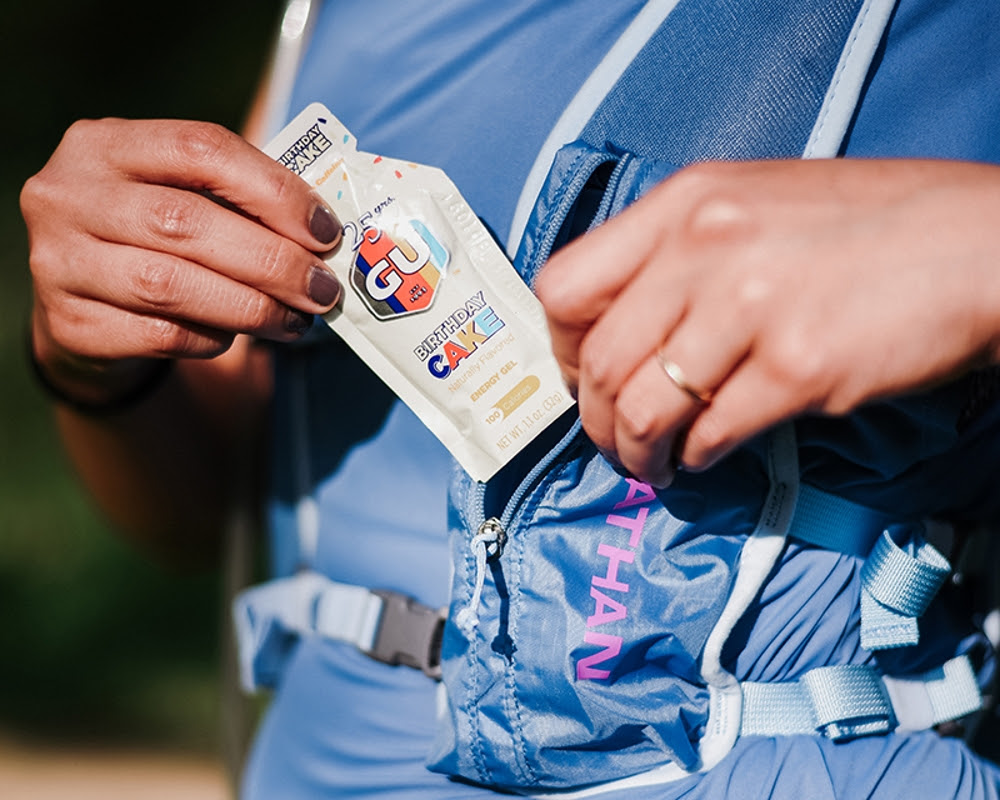How Energy Gels Work
When running, your body uses two sources of fuel – fats and carbohydrates. Fats are more readily available in the body, but they take longer to break down into usable energy. Carbohydrates break down quickly in the body, making this the primary fuel source your body relies on. The problem is your body can only store a limited amount of carbohydrates at a time. This is where energy gels come into play. Energy gels are quickly absorbed into the bloodstream, providing a spike in energy. Gels also contain other ingredients like electrolytes and even caffeine to further boost performance.
When to Use Energy Gels
There is no “perfect time” to take an energy gel as every runner absorbs and processes carbohydrates at a different rate. According to an article published by Sanford Health, runners should aim to take in 40-60 grams of carbohydrates per hour after the first hour of running and continue to consume that amount about every 45 minutes thereafter. It is important to take the gel before you “hit the wall” to help avoid lactic acid build-up and fatigue.
How to Choose an Energy Gel
With so many energy gels available, choosing the right one can seem daunting. Remember, it’s important to practice with gels prior to race day. This will help ensure your body can tolerate the gel while running and that you can tolerate the flavor.
No matter which gel you end up choosing, make sure to take them with water. Energy gels contain lots of sugar and sodium and without water, they take longer to digest. Read on to find out more about Gu energy gels, now on sale at Fleet Feet Chicago in-store only through September 30th. Buy 3, get 1 free.

Connect With Us
See the latest from Fleet Feet Chicago